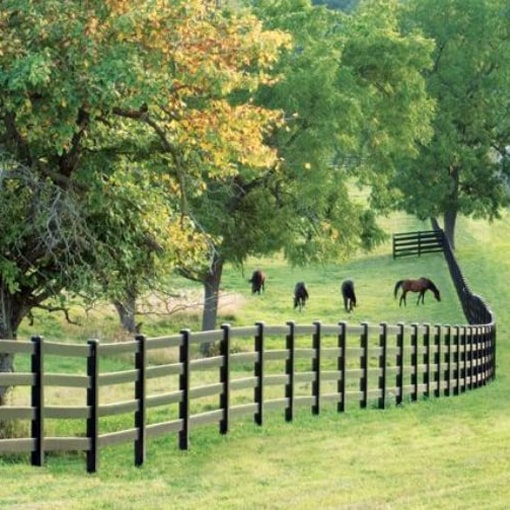All Categories
Featured

When taking into consideration installing a fencing on your building, one of the most essential actions is to comprehend whether you need an authorization. The certain permits needed can differ depending on your place, the kind of fence you intend to set up, and the elevation or positioning of the fence.
Why You Required a License for a Fence Installation. A fence authorization is necessary to make certain that the installment fulfills neighborhood guidelines. The permit process aids local authorities confirm that your fencing does not interfere with traffic visibility, regard your property lines, or go against elevation limitations. It likewise makes sure the safety of the framework, so it doesn't position a danger to you, your next-door neighbors, or the public. Mounting a fence without an authorization can cause fines, removal of the fence, or delays in building, so it's important to check whether an authorization is needed before beginning your task.
Sorts Of Licenses You May Need. There are a few common sorts of permits you could need for a fencing installation:
Structure Permit. A structure authorization is the most typical permit needed for fencing setups. This license makes certain that the fence satisfies safety and security standards and is constructed according to regional building codes. A structure permit is normally required if the fencing exceeds a specific height (usually 6 feet), is constructed from specific materials, or lies near a public walkway or road.
Zoning Permit. A zoning authorization might be required to verify that your fencing adheres to neighborhood zoning regulations. Zoning policies can dictate where a fencing can be put on your residential property, just how high it can be, and whether it is allowed certain areas (such as along building lines or in front yards) For instance, some towns have guidelines restricting the height of fence the front yard to guarantee exposure for pedestrians and chauffeurs.

Setback License. If you are building a fencing near your building line or close to a street, you might need a setback license. A problem describes the range a structure, consisting of fences, must be from the home line. Setback regulations differ by area, and making certain that your fencing is put appropriately can prevent conflicts with neighbors and stay clear of infractions.
Home Owner Organization (HOA) Authorization. You might need approval from them in addition to neighborhood licenses if you live in a community regulated by a Homeowner's Organization (HOA) HOA regulations typically cover the kind of materials, elevation, design, and shade of fences. Also if your local government doesn't need a permit, your HOA might still have specific standards that require to be complied with.
Exactly How to Use for a Fence Authorization. To request a fence license, you'll need to call your regional structure division or preparation office. The application procedure typically involves filling in a form, paying a fee, and sending a website plan of your property that reveals the recommended place of the fence. You might likewise need to include information about the materials, height, and style of the fencing.
Sometimes, a neighborhood authorities may require to examine your residential property before authorizing the license. As soon as the authorization is approved, you will certainly be licensed to proceed with your fence installation.
When Is an Authorization Not Required? In specific situations, a license might not be required. These scenarios can consist of:
Low Height Fences: In many locations, fencings that are listed below a particular height (often 3 to 4 feet) may not require a license, specifically if they are put in the backyard or other non-visible locations.
Fence Replacement: If you're replacing an existing fence with the same elevation and product, some locations might not call for a brand-new authorization.
Non-Obtrusive Fencings: Short-term or ornamental fencings, such as those used for gardening or landscape design functions, may not need permits as long as they are not permanent and reduced.
Nonetheless, it is very important to check with your neighborhood zoning workplace or structure division, as regulations can vary by territory.
Consequences of Not Getting a Permit. Failing to acquire the needed permits can result in considerable effects. These consist of penalties, forced elimination of the fencing, and even hold-ups in construction. In addition, if your fencing does not fulfill local laws, you might deal with legal problems with neighbors or neighborhood authorities.

Verdict. By making sure that you follow regional regulations and acquire the essential permits, you can stay clear of expensive blunders and ensure that your fencing is legally compliant. Inspect with your local building division, HOA, and zoning workplace to determine what authorizations are required for your particular fencing project.
Latest Posts
Explore WyHy FCU – Top Benefits for Your Financial Future
Published May 25, 25
2 min read
Boost Your Home's Outside with Weathercraft's Exterior siding Solutions
Published May 23, 25
1 min read
Don’t Miss Special Auto Repair Offers in Chicago at Montclare Auto Repair
Published May 18, 25
1 min read
More
Latest Posts
Explore WyHy FCU – Top Benefits for Your Financial Future
Published May 25, 25
2 min read
Boost Your Home's Outside with Weathercraft's Exterior siding Solutions
Published May 23, 25
1 min read
Don’t Miss Special Auto Repair Offers in Chicago at Montclare Auto Repair
Published May 18, 25
1 min read